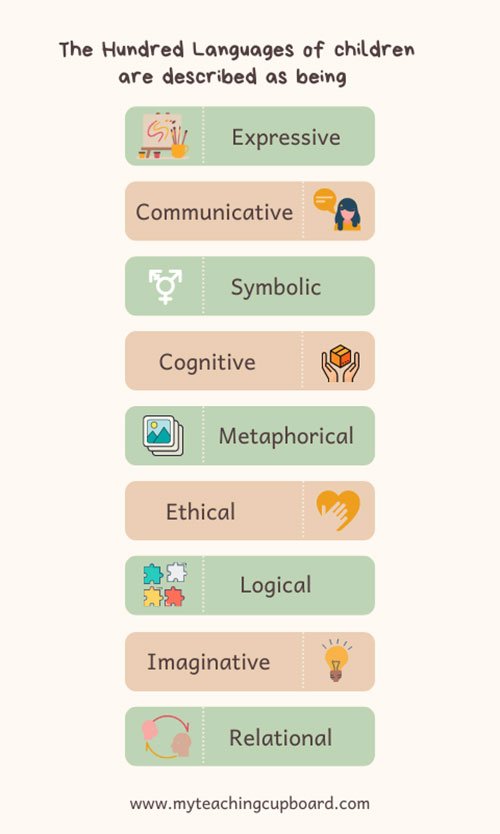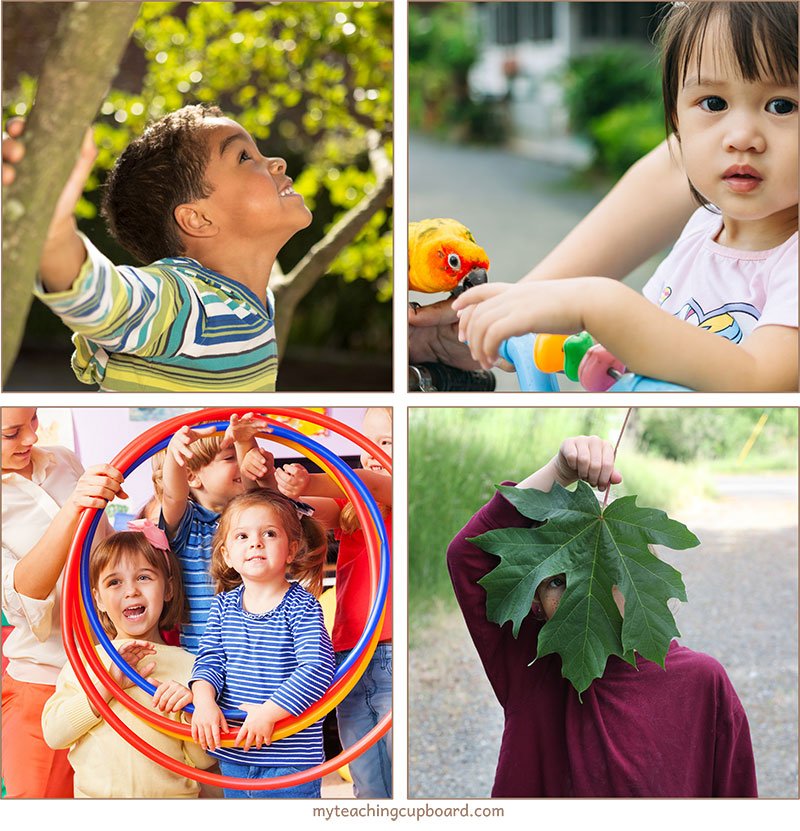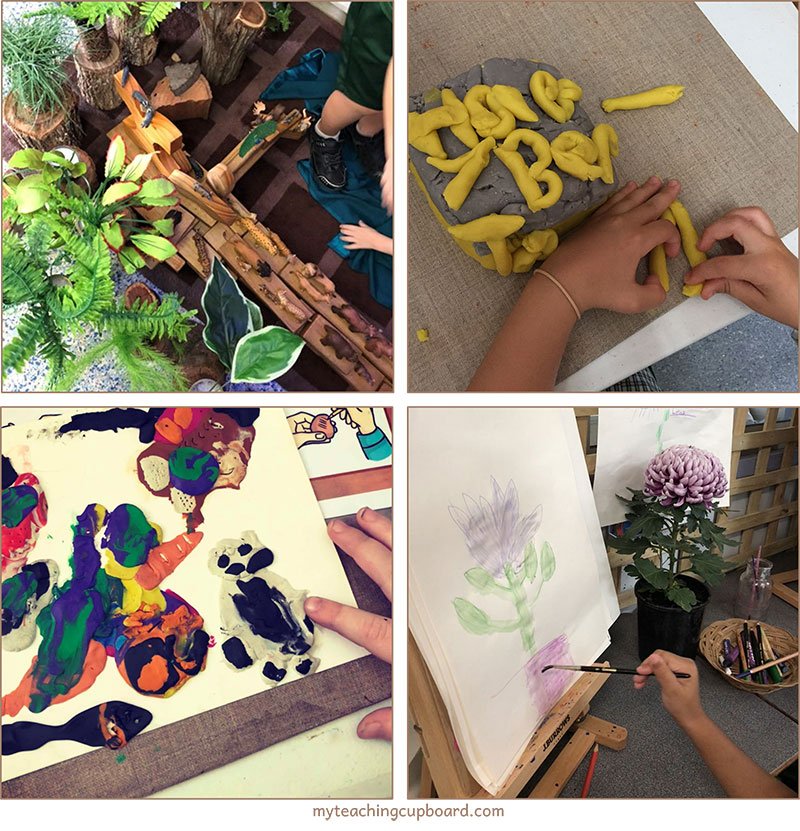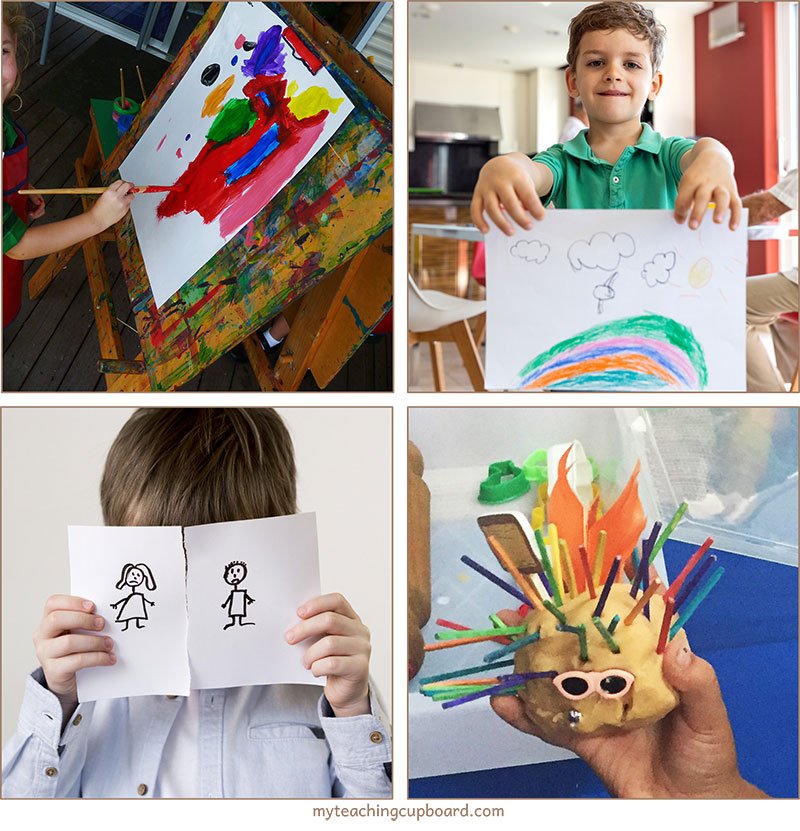What Does the 100 Languages of Children Mean?
Discover what the 100 languages of children means, where it came from and why it is an important element of any child-centered education program. In this blog post you’ll find how you can use the hundred languages of children in your classroom.
Are you interested in learning more about the 100 languages of children?
The Hundred Languages is a term used by the educators of Reggio Emilia, Italy. The children in their Reggio classrooms use one hundred languages (and more) to construct concepts and consolidate their understanding of the world around them.
In this blog post you will discover what the 100 languages of children means, where the idea started, why it is an important element of a child-centered education program and how you can use the 100 languages of children in your classroom.
For the educators and children of Reggio Emilia, the hundred languages become a way of structuring knowledge and organising learning. The Hundred Languages of children are described as being
Expressive
Communicative
Symbolic
Cognitive
Ethical
Metaphorical
Logical
Imaginative
Relational
The Reggio Emilia Approach
The Reggio Emilia Approach is a child-centered pedagogy which has been labelled by some as the best early childhood education model in the world. Loris Malaguzzi, an Italian researcher and educator, played a crucial role in the creation and development of the Reggio Emilia Approach.
The Reggio philosophy sees children as powerful and capable individuals. Malaguzzi’s insightful observations of children found they have the ability and desire to construct their own knowledge. He wrote:
To learn is a satisfying experience… Once children are helped to view themselves as authors or inventors, once they are helped to discover the pleasure of inquiry, their motivation and interest explodes. The age of childhood is more characteristic of this than the ages that follow.
The educators of Reggio Emilia base their philosophy on the understanding that children construct and co-construct knowledge. They observed their children constantly interacting with their physical and social environments, asking questions, and forming understandings of the world around them.
So, the Reggio educators provided their children with opportunities to share their experiences and understandings with others. They discovered that as the children shared their knowledge in both formal and informal ways, it turned into a very rich learning experience for everybody concerned.
Malaguzzi wrote a poem to reflect his thoughts and his image of the child as researcher.
The 100 Languages of Children Poem
NO WAY. THE HUNDRED IS THERE
The child
is made of one hundred.
The child has
a hundred languages
a hundred hands
a hundred thoughts
a hundred ways of thinking
of playing, of speaking.
A hundred always a hundred
ways of listening
of marvelling of loving
a hundred joys
for singing and understanding
a hundred worlds
to discover
a hundred worlds
to invent
a hundred worlds
to dream.
The child has
a hundred languages
(and a hundred hundred hundred more)
but they steal ninety-nine.
The school and the culture
separate the head from the body.
They tell the child:
to think without hands
to do without head
to listen and not to speak
to understand without joy
to love and to marvel
only at Easter and Christmas.
They tell the child:
to discover the world already there
and of the hundred
they steal ninety-nine.
They tell the child:
that work and play
reality and fantasy
science and imagination
sky and earth
reason and dream
are things
that do not belong together.
And thus, they tell the child
that the hundred is not there.
The child says:
No way. The hundred is there.
Loris Malaguzzi (translated by Lella Gandini)
You might like to print out this beautiful poem and display it in your learning environment or include it in your planning. You can download a FREE 100 languages of children poem printable HERE in my FREE Resource library.
The Hundred Languages of Reggio Emilia
Through the observations of the children in Reggio Emilia schools, the educators there discovered the children had a strong desire to communicate and build relationships with others. They found the children also enjoyed communicating with others about their own personal development of skills and knowledge.
As the desire to communicate was such a driving force for the Reggio children, the Reggio educators explored the possibilities of children communicating through many different languages and the concept of the hundred languages of children was born.
Some researchers noted a connection between the hundred languages of children concept and the research of Howard Gardener’s multiple intelligences. Malaguzzi suggests that children can relate to several different symbolic languages all at the same time:
Children are able to watch television, play with a doll or train, leaf through a book, go away from the room, come back, and still reconstruct what was going on, with extraordinary logic and precision.
Malaguzzi also suggests that symbols used by children are associated with emotions, feelings, and perhaps even other things beyond our observations. When Malaguzzi uses the term symbols, he defines it as symbolic language used by children to grow and communicate and does not restrict it to the traditional school symbols of literacy and numeracy.
How the Hundred Languages Communicate
In Reggio Emilia schools, communication is the foundation for all learning. The children are encouraged and expected to take part in verbal discussions regularly. These discussions become the springboard to the symbolic representations of their skills and knowledge. The educators will often ask their children to represent their ideas, theories or plans in a graphic way.
This process allows discussions and knowledge to continue and grow. The symbolic representation gives the children further opportunities for concept formation and develops problem solving skills.
These languages (the Hundred Languages of Children) are symbolic and are open to the endless potentials in children. They believe in the potential of a child's ability to wonder. It is the belief that there are "multiple ways of seeing and multiple ways of being."
The Hundred Languages of Children is a Learning Process
The children in Reggio Emilia schools are often asked to explain their symbolic representations. The educators see the process of explanation as extremely valuable and an important part of the learning process. They believe the explanation of the children’s symbolic representations is an opportunity for the children to clarify their ideas.
Reggio children will go back and forth between verbal discussions and symbolic representations. They are encouraged to explore all forms of symbolic representations – drawing, painting or wire and clay sculptures. Each representation requiring the children to further explain their thinking and giving rise to new interpretations and ideas.
These representations are seen as another of the hundred languages of children.
If you are looking for resources to help your children explain their thinking and their work, you might be interested in a set of open-ended question prompts. These beautiful prompts will encourage your children to verbalise their thinking. They will also enrich the academic and social learning in your classroom by encouraging your children’s natural curiosity.
You will receive a .pdf file containing 30 beautiful open-ended question prompts. Each prompt is designed to be printed on A4 paper or card. If you wanted them to be a smaller size, you could tile the printing to have 2 or 4 images to a page. I do recommend printing them at a high quality to achieve the stunning quality.
Place them around your room, on bulletin boards, at investigation areas, throughout your planning documents to prompt your questioning when interacting with your children. They will help you to challenge your children to think deeply and are also a great reminder to invite the children to share their thinking and their view of the world with you.
The Atelierista’s Role
Reggio schools employ a resident artist (atelierista) to encourage further opportunities for discussion and collaborations. The artist’s knowledge of materials and their different view of learning offers children rich resources and skills in many of the hundred languages.
At first the children are encouraged to explore and experiment with the art materials. As they play, they are developing the skills needed to eventually become literate in many different art mediums and symbolic languages.
The Hundred Languages and Writing
Writing is one of the 100 languages of children.
The Reggio philosophy believes the representation of words in a graphic form is a very complex task. They argue that children need to be given plenty of time to make their thinking visible and to clarify their ideas.
The educators noticed that once the children begin to understand that their symbolic representations can communicate and that their work can be understood by others, the children begin to desire and produce work with great clarity. The educators place a greater value on the children’s symbolic representations because they are seen to be much simpler, richer, and clearer than words.
The skills and sophistication of the children’s graphic representations in Reggio Emilia constantly amaze those who visit there. It is the standard of the work produced by the Reggio children that has helped to build the reputation of Reggio Emilia having the best early childhood education model in the world.
Further Reading on the 100 Languages of Children
If you are interested in learning more about the Reggio Emilia philosophy and the implications it has for us as teachers in Australia, you might be interested in this text. Reflections by Jan Milikan.
Here is an excerpt from the book:
One participant commented that, when visiting the schools in Reggio Emilia and observing the work of the children, she thought, ‘this doesn’t happen with young children in Australia’. She has now discovered that our children are just as capable if we allow them the opportunity…If we provide the opportunity for children to become engaged in meaningful experiences that allow them to make connections and develop understandings, there appears to be no time-limit to their concentration.
If children’s capabilities are recognised, and they are given opportunities for authentic learning experiences, social and emotional behaviours also change, demonstrating tenacity and resilience, and an appreciation of the role of others, both adults and peers, in their search for meaning. Participants noted the importance of viewing the child holistically and valuing ‘the hundred languages’ in order to validate all of the possible literacies, in making visible to ourselves and to others, the strong capable child. (pages 45-46)
Once you understand the 100 languages of children and the impact these languages can have in your classroom, it is difficult not to value them and incorporate them wherever and whenever possible.
If you found this blog post about the 100 languages of children useful, please consider sharing it...
Just CLICK the sharing box below.👇














